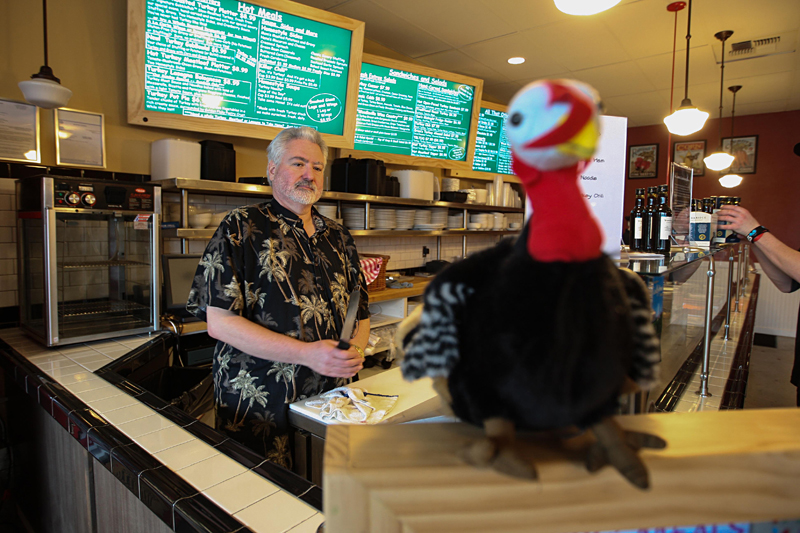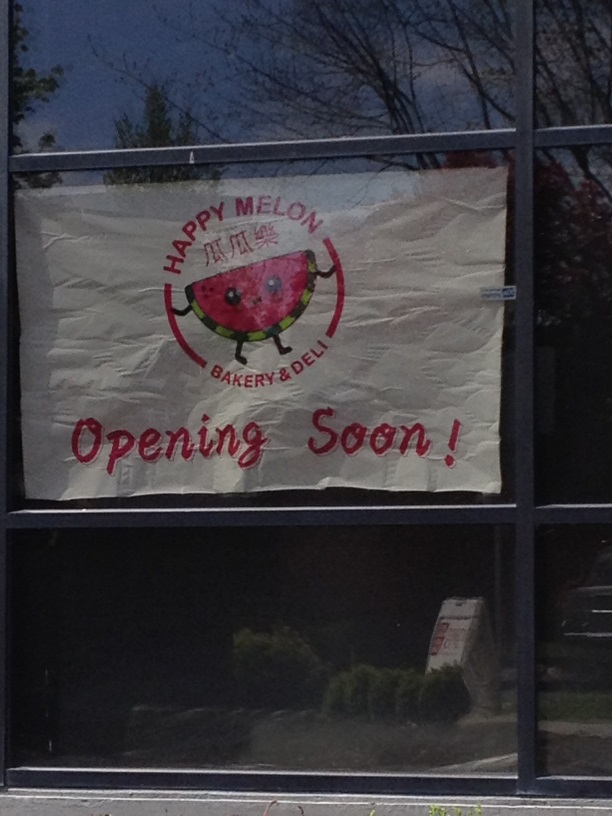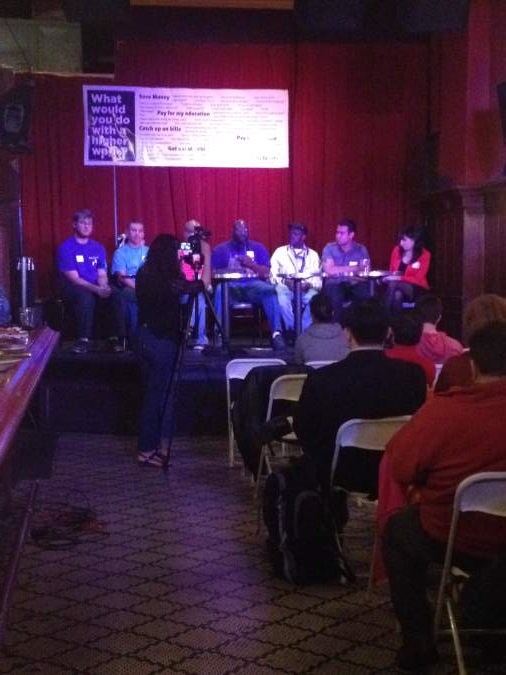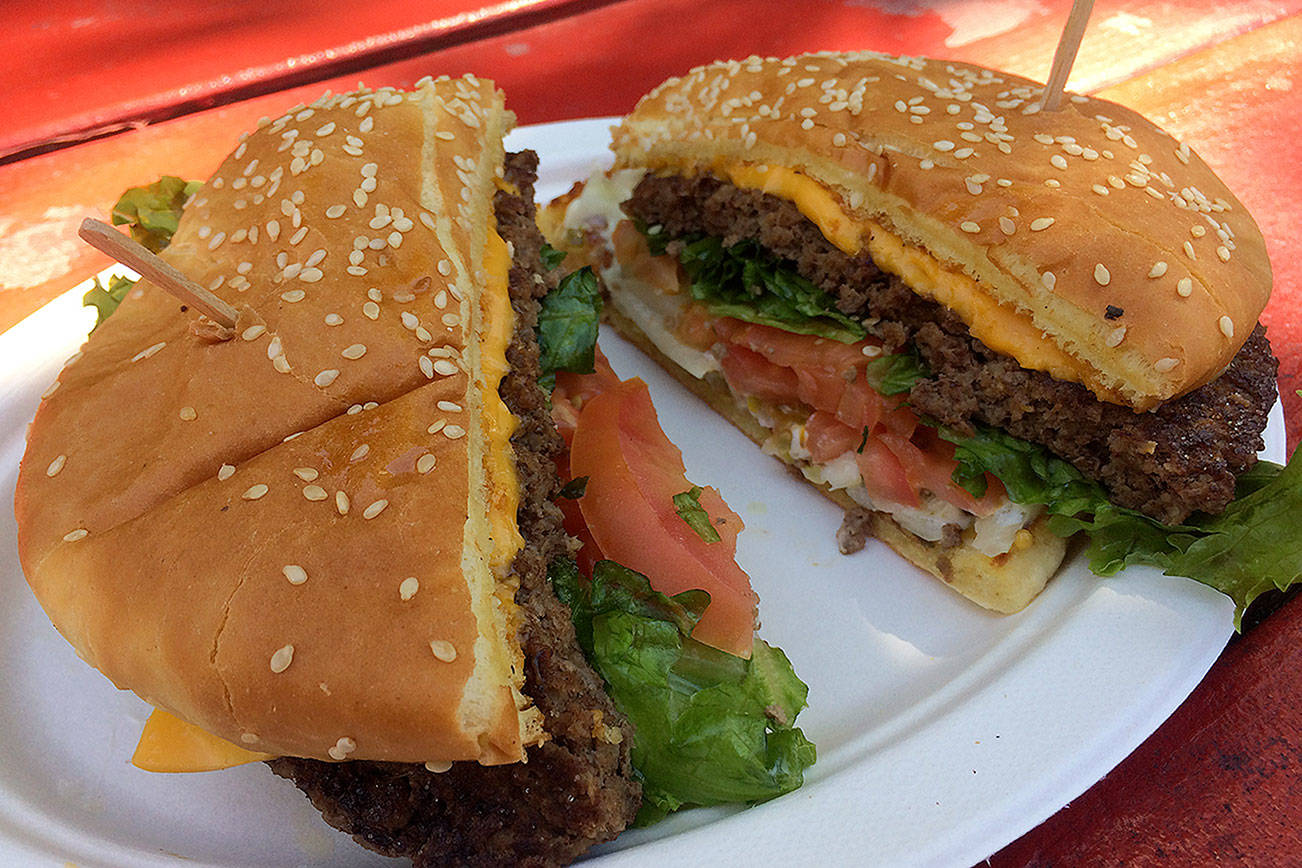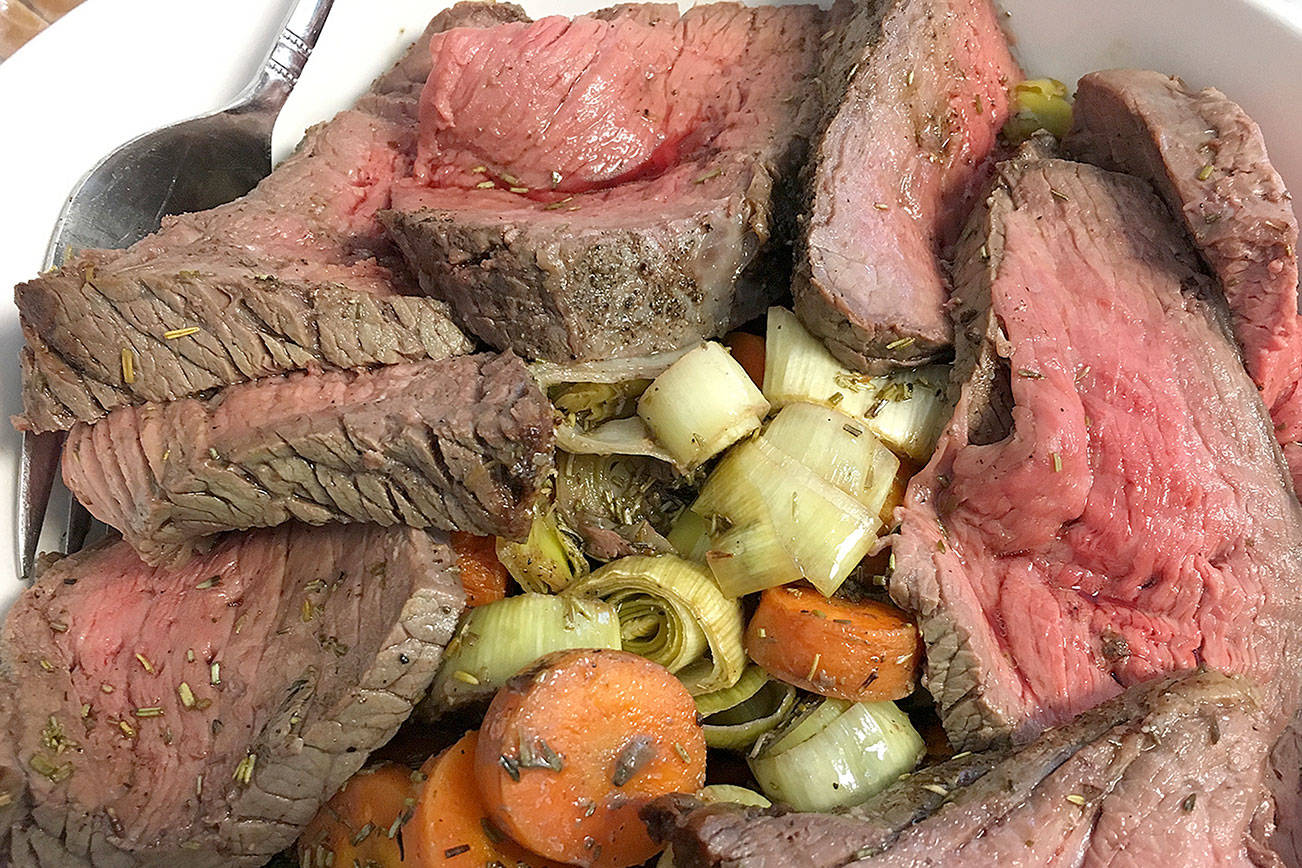Back in grade school, when we crayoned hand-traced turkeys and made buckle hats from construction paper and glue, we sincerely believed the Pilgrims and Pokanokets initiated Thanksgiving by sitting around a long table, supping on cranberry sauce and casseroles. We’ve since recalibrated our vision of the Plymouth party in accordance with locavorism: Now we picture Natives and Europeans stirring pottages of venison and seal, roasting swans on wooden spits, and popping open clams, which grew so massive in 17th-century Cape Cod that you couldn’t walk along the shore without getting soaked by bivalve spray.
We now accept that the first Thanksgiving menu included ducks and bluefish, not cornbread dressing and pumpkin pie. What’s been harder to let loose is the notion that the first Thanksgiving was fancy. It’s tempting to imagine that two disparate communities, united only by fear and disease, applied a certain pomp to a meal that in Civil War-era America came to signify the nation’s capacity for reconciliation. But that’s not what happened. The first Thanksgiving was a boozy, unruly potluck, closer in spirit to a Dionysian harvest festival than a ceremonious white-tablecloth dinner. There weren’t enough chairs to go around, and the Pilgrims didn’t have any forks. If modern eaters wanted to do conceptual justice to the 1620 experience, they’d forgo the crimped-edge pecan pies and magnums of prosecco and order pizzas and a keg. And then they’d celebrate madly, in the manner of settlers who’d withstood 11 months in what Nathaniel Philbrick, author of Mayflower: A Story of Courage, Community, and War, called “the haunted vacancy of New England.”
The Pilgrims’ lot was exceedingly tough. Determined to escape the Church of England by fleeing to Holland, the community first retained a thieving sea captain who turned them over to the police. Next they hired a captain who got the willies before his ship was fully boarded, sailing off without the women and children. Everyone eventually made it to Holland, but the Pilgrims worried they were still within the Church’s reach, so they purchased a square-rigged vessel that had previously transported wine, hemp, hops, whale blubber, and vinegar. It took the Pilgrims 65 sea-sickening days to make the transatlantic trip aboard the Mayflower. For the travelers who survived, the coming years would bring hunger, suicide, sickness, and war.
It’s almost incomprehensible that people would voluntarily choose such hardship. But, minus the risk of starvation and scurvy, Americans still make seemingly unwise decisions all the time. The Pilgrims’ legacy isn’t a grand meal, but a willingness to give up everything in pursuit of success. And while no segment of the American population is immune to the Pilgrim bug, would-be restaurant owners are especially susceptible.
Last month, Adam Gold, a veteran television consultant, opened Gobble in a Woodinville strip mall. “All we serve is turkey in a gazillion different forms,” he says of the counter-service restaurant. “There really isn’t another restaurant doing what we’re doing. It’s sort of a gamble, isn’t it? When you say ‘turkey’ to people, about four out of five people’s eyes roll back in their heads like Homer Simpson talking about doughnuts. But the other one says, ‘Once a year is enough for me.’ “
The specter of detractors didn’t derail Gold’s plans, years in the making, to offer a menu built around Thanksgiving staples. Buoyed by industry statistics showing turkey consumption is on the upswing, Gold developed recipes for creamed spinach, green-bean casserole, macaroni-and-cheese, Brussels sprouts, and cornbread. He’d already perfected turkey roasting: Long before he opened Gobble, he started producing low-budget online turkey-preparation videos, including “Should I Brine My Turkey?”, “How to Carve a Turkey,” and “Making Turkey Stock,” which features a Hawaiian-shirted Gold showing viewers how to slide the turkey’s “goodie bag” out of its neck cavity.
“Everything I do you could do at home,” Gold says, conceding his restaurant’s turkey secrets are broadcast on YouTube. “But people don’t want to take the trouble to do it.”
Gobble is arranged similarly to Boston Market, with most customers ordering the $8.99 turkey platter with stuffing, gravy, cranberry sauce, and two sides. The restaurant also serves turkey chili, turkey lasagna, turkey pot pie, turkey Caesar salads, and open-faced turkey sandwiches. Gold and his consultants guessed takeout would account for 80 percent of the restaurant’s business, “but everyone wants to stay,” he says. The room’s decor, like many of the recipes, was drawn from Gold’s personal collection. “All of the stuff you see on the walls came out of my house,” he says. “My older son walked in and said, ‘This is our house.’ Same colors, same cabinetry.”
While Gobble produces a fantastically juicy turkey that could make even dark-meat loyalists deign to eat a breast, every other element of the enterprise is trouble-prone. When I dropped by the restaurant soon after it opened, it took a flailing crew of four well-intentioned staffers to assemble a tray with cold macaroni, parched mashed potatoes, and sour green beans (although I’d considered other sides, the staffers warned against it). Much to Gold’s distress, other customers have reported similar experiences.
Gold freely admits he’s struggling with inconsistent food and sloppy service. “It feels like 10 years,” Gold says of the restaurant’s opening weeks. “We’re obviously having challenges.” He attributes many of the missteps to his inexperience. Gold is learning how to order so his inventory doesn’t go bad before he can use it, and how to coach his staffers to care about quality. “I have to make them understand we rise and fall together,” he says, pointing out that he offers employees a profit-sharing plan.
A few of Gobble’s charges seem deeply invested: “I can tell that by the texts I receive at 3 a.m. saying the register’s short 49 cents,” Gold says. But other employees have already been let go for not grasping how restaurants work. “The middle of lunch rush is not the time to tell me we’re out of pot pies, or to start preparing meatloaf,” he says. “I don’t want a fresh meatloaf at 2. I want it at 4:30.”
Gobble now serves about 125 meals per day, or half of what Gold estimates the restaurant needs to sell to break even. Still, the restaurant is so overwhelmed that it’s sitting out the year’s biggest turkey day. According to a website post titled “Um . . . about Thanksgiving,” Gobble isn’t ready for a whole turkey rush. “We’d never forgive ourselves—and we have a hunch you wouldn’t either—if we ruined your holiday,” the online posting states.
The restaurant is bracing for a post-holiday lull, although Gold hopes traffic will pick up once the Wi-Fi’s working. “We’ll turn into your local Starbucks with macaroni,” he predicts.
Having sunk all his money into Gobble, Gold grumbles that he probably shouldn’t have opened the restaurant. But his regrets haven’t stopped him from looking to the future with Pilgrim-esque optimism. “If this one works, you might see some more [locations],” he says. “I don’t know if I want to be a mogul with 20,000 of these, but if someone wants to offer me a billion dollars, I don’t think money’s dirty. And the turkey’s really good.”
PRICE GUIDE Turkey platter $9.99 Meatloaf platter $8.99 Pot pie $7.99Turkey sandwich $7.99
